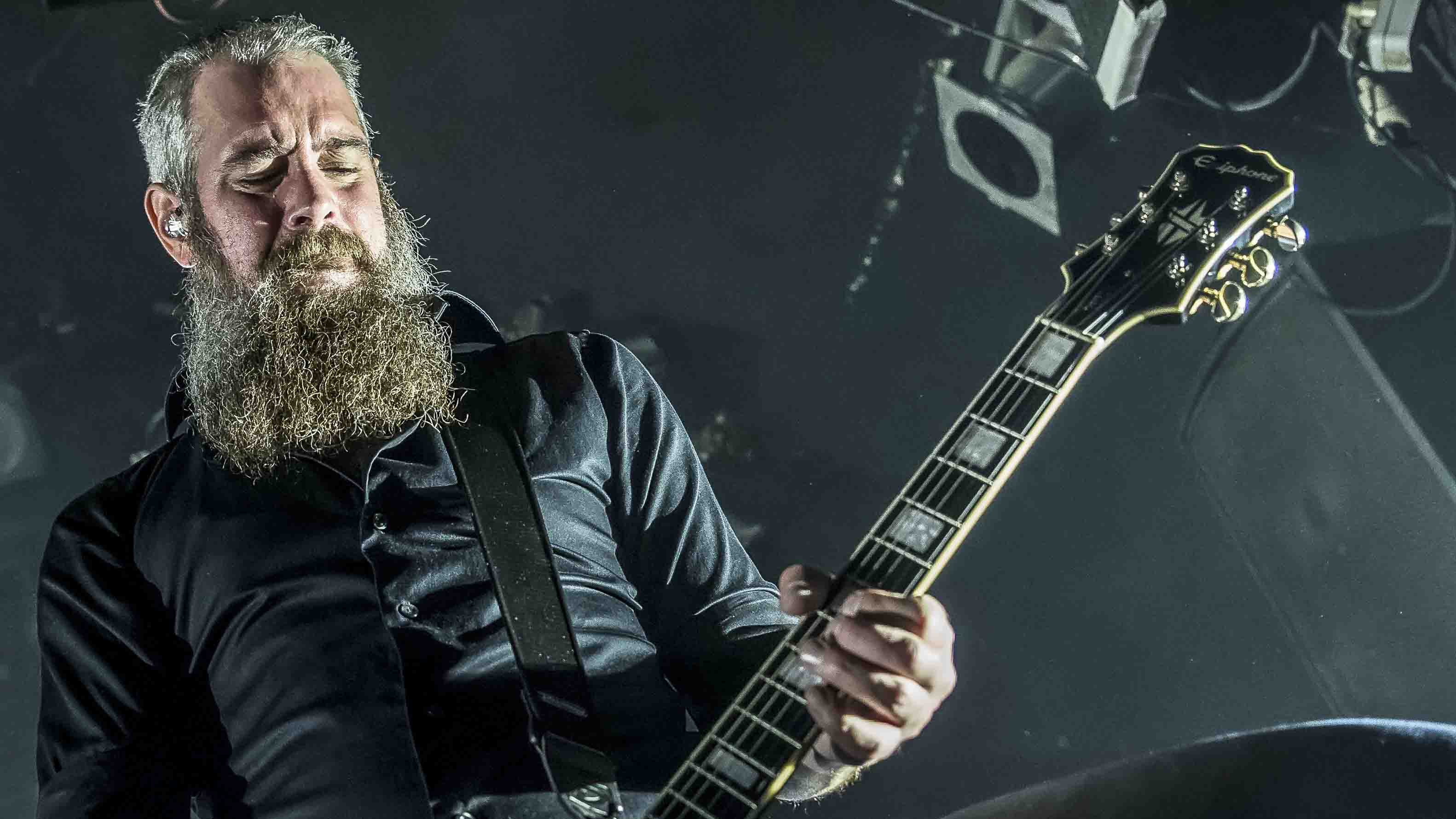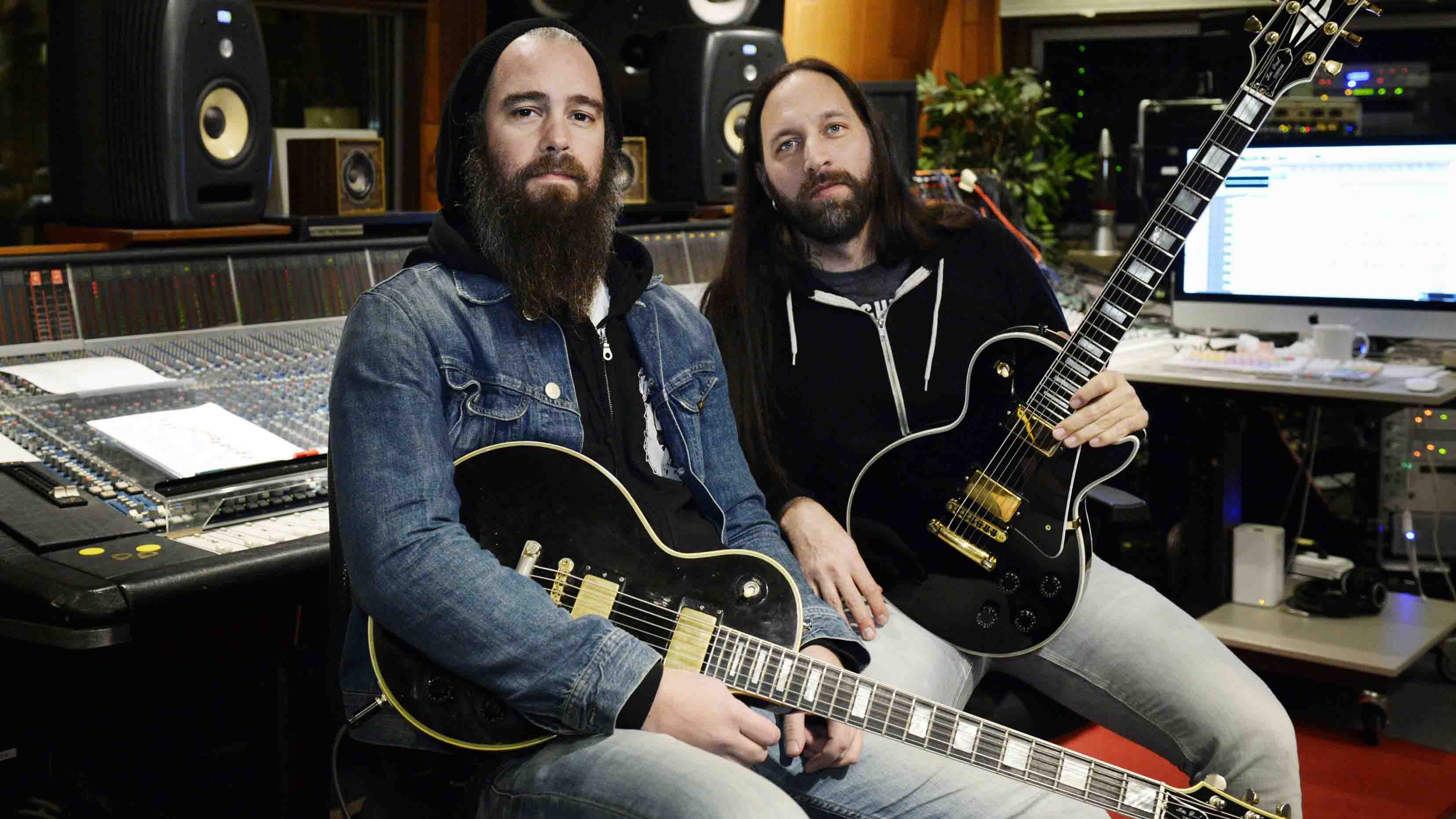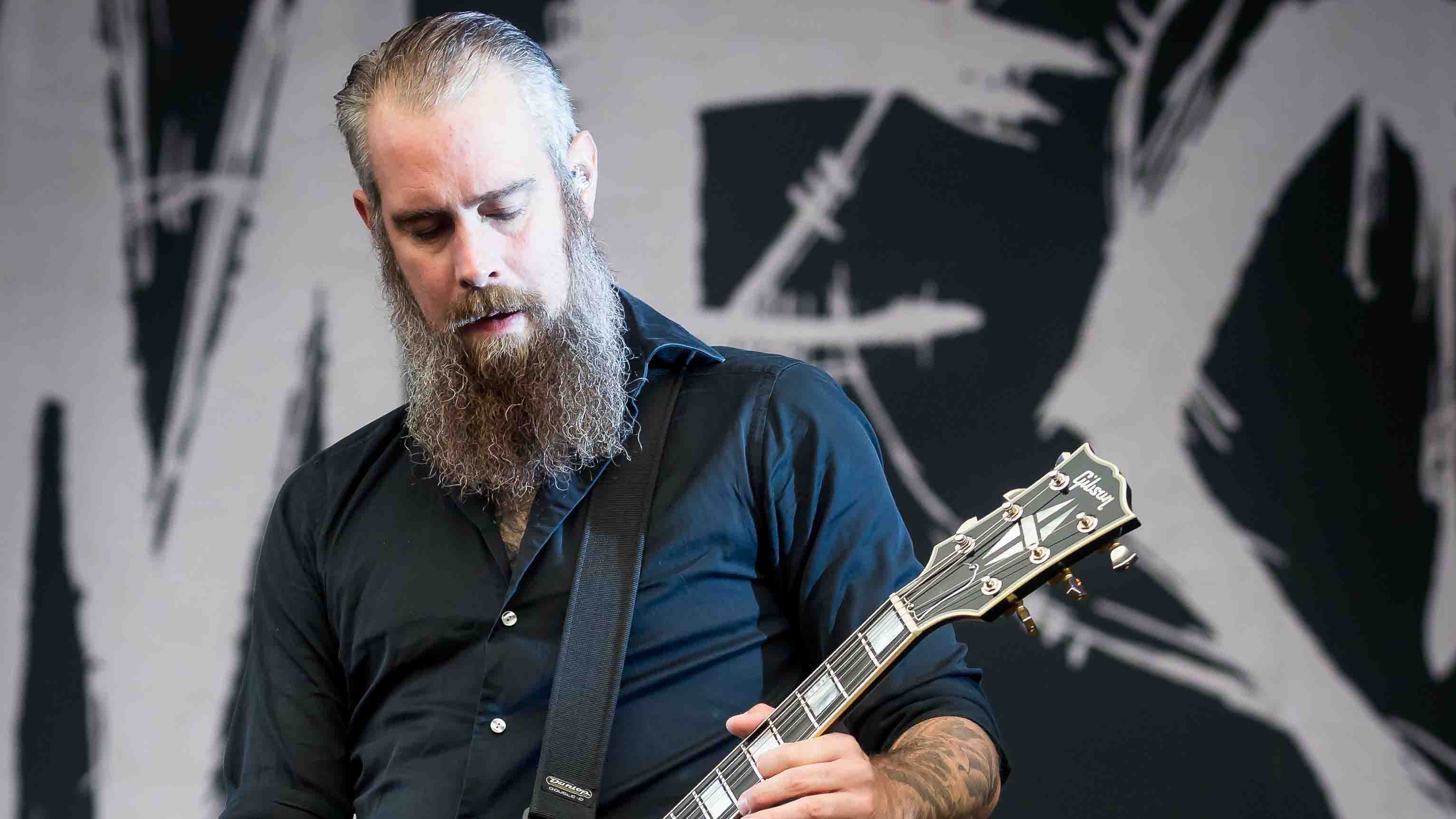Björn Gelotte talks In Flames' legacy, rare Marshalls and why all guitarists should play drums
Swedish melodic death metal pioneer reflects

From sticks to picks
Not many guitarists can tell you they originally joined their band as a drummer, and while it was on the condition he could still contribute on his preferred instrument, In Flames axeman Björn Gelotte remains fond of the learnings that came with his former role.
In fact, the musician admits it was an experience that gave him insights many guitarists fail to see…
“In Flames was more of studio project before I joined,” begins Gelotte, sat in the basement studio of London’s Gibson showroom on a mild-autumn afternoon.
“[Founding ex-member] Jesper Strömblad played drums on the debut, Lunar Strain, then the following Subterraenean EP was a mix of Daniel Erlandsson from Arch Enemy and Anders Jivarp from Dark Tranquility. Jesper was pretty bad at drums, so I guess I sucked a little bit less than him, ha ha!
Playing drums really helps your songwriting; you get an understanding of dynamics and arrangement
“Playing drums really helps your songwriting; you get an understanding of dynamics and arrangement. It’s a lot of work physically - you learn not to overdo things.
“The drums don’t need to be in the foreground; they should be very much the foundation of the song. I’d say it helped me more than actual guitar playing, because I’m a lazy fucker!”

Reroute to remain
His moment came when Niclas Engelin departed in 1998, and that first gig couldn’t have been more nerve-wracking – playing at Eindhoven’s Dynamo Festival in front of 10,000-odd people, which he recalls as being “a super-scary opportunity”.
By this point, the band had already laid the blueprint for melodic death metal along with fellow Gothenburg bands At The Gates and Dark Tranquility.
As their European popularity soared into the new millennium, almost a decade on from their embryonic years as a side-project, a new wave of American bands started citing In Flames as the main architects of their sound.
From Trivium, whose frontman Matt Heafy once stated In Flames were as important as Metallica, to Massachusetts powerhouse Killswitch Engage along with countless others, many felt this obscure Swedish outfit had chanced upon a new take on heavy music…
We felt proud to have been part of that new sound
“I think we were lucky to play with a lot of those American bands,” continues Gelotte, humbly.
“They came from more of a hardcore musical background and gravitated to the melodies in our sound, combining their roots of chunkier, more rhythmic guitar playing with the melodies to create something of their own… which is the whole point of music!
“For us, it was never weird; we felt proud to have been part of that new sound. Maybe those bands were name-dropping us because we were one of the few that came to the US and they could actually see live.”
It would have been all too easy for In Flames to continue basking in the glory of those classic years, but as others began attempting to recreate their own twin-guitar melodeath harmonies, the originators chose to move on.
This year’s 12th album, Battles, includes more experimentation with electronic layers over their metal backbone and pop-driven vocal hooks that aren’t a million miles away from Sheffield crossover sensation Bring Me The Horizon.
“If you compare it to the early stuff, yes, it is very different,” admits Gelotte.
“But I’d like to think there’s a thread running through all of them… you can trace it back. We don’t consciously think we need to keep the past with us; we do what we think is good. That’s the only measurement we can go by.”

A sense of purpose
For the recordings, the guitarist stuck to his tried and tested setup of a Gibson Les Paul Custom, loaded with the EMG 81/85 pickup combination that’s favoured by many of the metal elite (“I started using them because you can never trust the power on stage – EMGs help because they boost the signal”).
That gets fed into a Marshall head very similar to the JCM800 Gelotte swore by for many years…
“I use a prototype now - it’s not an 800,” he explains.
They never made these JCM800s as a line, so I don’t really know what it’s made out of. The head designer changed at Marshall and I was lucky to get four of them
“They never made these ones as a line, so I don’t really know what it’s made out of. The head designer changed at Marshall and I was lucky to get four of them.
“Whenever we toured in the US, I used to borrow amps from Doug Aldrich who was playing in Whitesnake, because he also had a few of these prototypes! That way I didn’t need to ship my amps over - and I’m a huge fan of his playing.”
There’s only one pedal that breaks the chain for the guitarist – the Jim Dunlop 95Q Cry Baby optical wah, preferred purely because it’s easier to turn off. For Gelotte, the classic Gibson/Cry Baby/Marshall tone is one that has earned its place in heavy music with good reason.
“You should always be able to tell when it’s a Gibson through a Marshall,” grins the guitarist.
“Taking it to the extreme is Slash, whose sound is all mid, almost like you’re listening through a phone, but it works so well against the low-end from the bass.
You should always be able to tell when it’s a Gibson through a Marshall
“I don’t use that much gain - we don’t need it when we tune down. It already sounds distorted and chunky, so I only dial in more for leads. The sound always shines through even if you’re playing over double kick drums and distorted bass. I like a tone with a lot of mid to it rather than being scooped.”
You’d think plugging pretty much straight into the amp would rule out the need for any massive MIDI controllers, but the guitarist explains that using a Voodoo Lab Ground Control – at the recommendation of his tech – has helped simplify things on stage and make both their lives easier.
“I only use two buttons on that thing,” he shrugs.
“I have distorted and lead, maybe I’ll only use crunch on a couple of songs. My guitar tech does all the programming and all that shit… but I’ve never had anyone do the switching for me. I see that as a big part of the guitar playing.
“Some players have their people do everything, but I would never be comfortable with that. If my tech thinks using a big box, on which I only need two buttons, is the best thing for me… that’s what I’ll go with! There’s not been many changes to my rig over the years - I just try to keep it very simple!”
Battles is out on 11 November via Nuclear Blast.
Amit has been writing for titles like Total Guitar, MusicRadar and Guitar World for over a decade and counts Richie Kotzen, Guthrie Govan and Jeff Beck among his primary influences. He's interviewed everyone from Ozzy Osbourne and Lemmy to Slash and Jimmy Page, and once even traded solos with a member of Slayer on a track released internationally. As a session guitarist, he's played alongside members of Judas Priest and Uriah Heep in London ensemble Metalworks, as well as handling lead guitars for legends like Glen Matlock (Sex Pistols, The Faces) and Stu Hamm (Steve Vai, Joe Satriani, G3).
